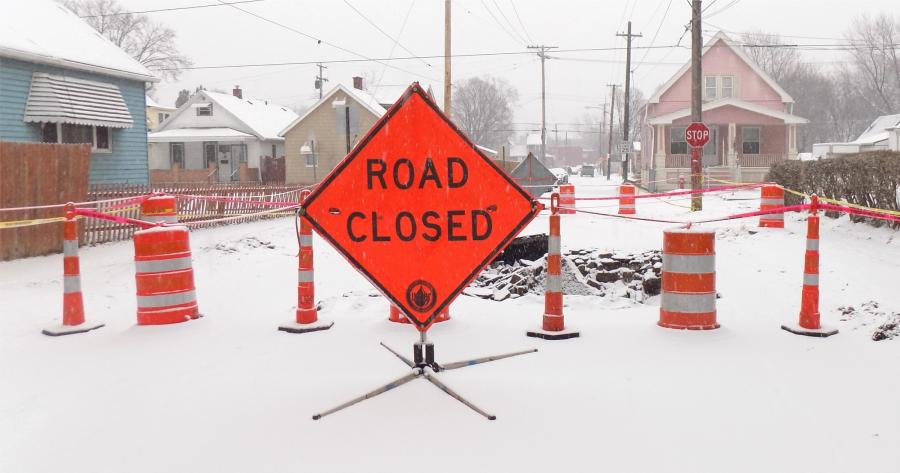Why Do More Water Main Breaks Occur During Winter?

Northeast Ohio winters can cause quite a few headaches, including water main breaks. Outside of winter, we average 3 to 5 main breaks a day. During the winter, that average increases to 5 to 7 breaks daily and even more if we experience an extreme cold spell.
This increase is common for water systems similar in age and climate to Cleveland Water’s and is attributable to several factors.
The predominant cause is increased force on water mains from the frozen ground. When air temperatures drop below 32°F, the water in the soil starts to freeze. The depth to which the ground freezes is called the frost line. In Northern Ohio, the typical winter frost line is 3 to 3 ½ feet.
Water mains and service lines throughout our distribution system are buried 5 feet or more underground in order to be below the frost line and prevent the water inside from freezing. At this depth, the weight of the soil above a pipe exerts a downward force of about 200 pounds for every foot of pipe. So pipes are constructed with materials designed to withstand this force.
However, as the water in the soil freezes, it exerts an increased force on anything below. The colder the winter and longer the cold, the deeper the frost line will go, increasing the downward force on underground water pipes to 400 pounds per foot or more and the likelihood that pipes will fracture under the pressure.
Thermal contraction of pipe can also play a role. Materials expand or contract when subjected to changes in temperature. Most materials expand when they are heated, and contract when they are cooled. Underground pipes, like the soil above, cool and contract in winter, which can lead to leaks and breaks.
The age and construction material of pipes are also contributing factors. The water mains in our Low, First High, and Second High East service areas tend to be older and made from cast iron. Mains in our Second High West and Third High service areas are newer, around 50 to 60 years old, and therefore more likely to be made from ductile iron. Cast iron is slightly more brittle than ductile iron, which is stronger and more flexible. Given their age and material, cast iron pipes are more susceptible to cracks and breaks.
As the 10th largest public water system in the country, Cleveland Water maintains more than 5,300 miles of water mains throughout our 640-square-mile service area. While we prepare every fall for the anticipated increase, each winter brings a different challenge as exact weather events can never be anticipated. We also proactively address main breaks by investing around $25 million a year on replacing mains.
If you see a water main break, call our Emergency Line at 216-664-3060, 24 hours a day, 7 days a week.
